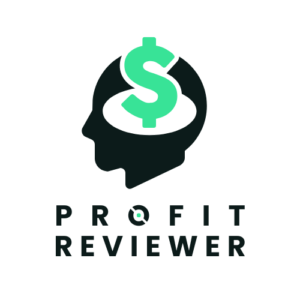Did you know that over 70% of professionals land jobs through their connections? This striking LinkedIn statistic reveals a fundamental truth about job search success in today’s market.
However, sending countless CVs randomly isn’t the path to securing that dream role. As Hays Regional Managing Director Mark Staniland noted, effective job hunting combines thorough preparation, strategic techniques, and realistic goal-setting.
The first two hours after waking up mark peak productivity for most people, making this the ideal time to focus on job-searching activities. With the rapidly evolving job landscape heading into 2025, job seekers must master crucial skills like artificial intelligence, data analytics, and authentic leadership to stay competitive.
This comprehensive guide breaks down the proven steps to transform any job search from overwhelming to achievable. From optimising your LinkedIn profile to mastering virtual interviews, readers will discover practical strategies that align with current hiring trends and maximise their chances of success.
Creating Your Strategic Job Search Plan

Creating a strategic job search plan is your professional roadmap in today’s competitive market. Research shows that job seekers who set clear goals are significantly more likely to land positions that align with their career aspirations.
Defining career goals for 2025
A successful job search begins with clearly defined professional objectives. According to the World Economic Forum’s Future Jobs Report 2025, the shift to skill-based hiring is rising, with employers prioritising practical expertise over formal qualifications. Consequently, your career goals should focus on developing skills that match industry trends and connect to your passions.
Start by identifying what you want more of and less of in your next role. Write these goals down, as documented objectives make you 42% more likely to follow through. Furthermore, career goals should remain specific while giving you enough flexibility to change course.
Setting realistic timelines and milestones
Breaking your job search into smaller, manageable steps creates a sense of progress and prevents overwhelm. Research indicates that the average job hunt can take up to 89 days, so patience becomes essential.
Set SMART milestones—Specific, Measurable, Achievable, Relevant, and Time-bound—to track your progress effectively. These precise goals include measurable actions and timelines that help keep you accountable. For instance, instead of vaguely aiming to “find a job,” commit to “revising your LinkedIn profile by next Tuesday” or “attending a webinar in your field this month”.
Identifying target companies and roles
Creating a target list of prospective employers saves time and distributes your research energy appropriately. Indeed, experts recommend starting with approximately 40 organisations using four main approaches:
- Dream employers you aspire to work for
- Companies where alumni or connections work
- Organisations actively hiring for suitable roles
- Trending companies in your industry
For each company, assess your motivation level, identify possible advocates within your network, and check for current job postings. This targeted approach prevents wasting time on opportunities that don’t align with your skills or interests.
Building a Powerful Online Presence
Your online presence functions as a digital business card that recruiters evaluate long before interviewing you. With over 90% of recruiters using LinkedIn to search for talent, establishing a strong professional brand online has become essential for job search success in 2025.
Optimising your LinkedIn profile for recruiter searches
LinkedIn profiles with professional photos receive 14 times more views than those without. To maximise visibility, strategically incorporate relevant keywords throughout your profile, as recruiters target candidates using specific search terms. Additionally, add your current skills in the Skills section—you can list up to 50 skills—and enable the “Open to Work” feature to signal recruiters about your availability without alerting your current employer.
Cleaning up your digital footprint
Research reveals that up to 80% of employers examine social media content when assessing candidate suitability. Before applying for positions, Google yourself to discover what potential employers might find. Remove or untag yourself from inappropriate content on social media that shows you in a negative light. Keep your social media G-rated, as spelling errors and references to drinking or drugs are significant turn-offs for recruiters.
Showcasing your expertise through content creation
Content serves as the currency of personal branding. You demonstrate knowledge by sharing valuable insights through articles or posts while contributing to industry conversations. Studies show that 54% of decision-makers are more willing to do business with thought leaders. Create content that solves problems or offers practical advice to establish yourself as an authority. Engage actively with connections by commenting on posts on social media platforms and participating in discussions—recruiters view active candidates on LinkedIn more positively than those with static profiles.
Consistency across platforms strengthens your professional dream brand and sets you out in today’s competitive employment market.
Crafting Application Materials That Stand Out
Application materials serve as your first impression with potential employers. Studies show that recruiters spend not more than 10 seconds scanning a CV before deciding whether to continue reading.
Tailoring your CV to job descriptions

In a job market where over 80% of listings require relevant professional experience, sending generic CVs significantly reduces your chances of securing interviews. Start by thoroughly reading the job description—at least three times. Subsequently, highlight keywords and specific skills mentioned, then incorporate these naturally throughout your CV.
Recruiters primarily search for candidates who have previously performed similar roles, so list your job titles. Moreover, prioritise measurable accomplishments over responsibilities. For instance, instead of stating “managed social media,” write “increased social media engagement by 25%”.
Writing compelling cover letters
Cover letters provide context that CVs alone cannot. Notably, they offer a chance to demonstrate how your qualifications match job requirements and address any unusual aspects of your candidacy.
Keep the tone warm and conversational while avoiding these common mistakes:
- Rehashing your CV (the most significant error candidates make)
- Opening with gimmicky statements
- Using generic templates for every application
- Extending beyond one page
Creating a professional portfolio
A career portfolio offers tangible proof of your qualifications, showcasing your best work samples, education, skills, and accomplishments. Specifically, freelancers who publish portfolios on platforms like Upwork are hired nine times more often than those who don’t.
Your portfolio should evolve with your career, featuring your most impressive projects rather than everything you’ve created. Include work samples demonstrating your skills in multiple contexts, client testimonials, and quantifiable results. Regularly update it by removing outdated examples and adding fresh achievements to maintain relevance.
Mastering the Modern Interview Process

Interviews represent the critical junction where preparation meets job search opportunities. With 46% of hiring managers using virtual interviews as their primary screening method, mastering modern interview techniques has become essential for job search success.
Preparing for virtual interviews
Virtual interviews require additional preparation beyond traditional face-to-face meetings. Initially, test your technology at least a day before the interview to avoid technical difficulties. Position your camera at eye level with good lighting from behind the camera, not behind you. Furthermore, dress professionally from head to toe—not just visible parts—as this affects your confidence and mindset.
Researching companies effectively
Thorough company research is a decisive factor in interview success. Begin by exploring the company website, focusing on its values, mission, and recent news. Likewise, check their social media presence and LinkedIn profiles for insights into company culture. Employer research should reveal products/services offered, company history, target markets, competitors, and unique selling points. This knowledge allows you to tailor responses demonstrating genuine interest—a quality 94% of HR managers value in candidates.
Practising common and behavioural questions
Behavioural interviews assess past performance as a predictor of future results. Prepare using the STAR method:
- Situation: Describe the context
- Task: Explain your responsibility
- Action: Detail the steps you took
- Result: Share outcomes achieved
Meanwhile, practise common questions about your career goals, strengths, weaknesses, and reasons for interest in the role.
Following up strategically after interviews
Send an email within 24 hours to express appreciation and show interest. Highlight specific conversation points to personalise your message. After sending this initial follow-up, wait 5-7 days before checking in again if you haven’t received a response. Above all, maintain professionalism in all communications to leave a lasting positive impression.
Leveraging Technology to Accelerate Your Job Search

Technology has transformed the job search landscape, with 18% of recent job seekers using tools like ChatGPT to enhance their applications. Those who leveraged AI were likelier to receive interview requests and negotiate higher salaries.
Using AI tools for application optimisation
AI-powered platforms analyse your application materials against specific job descriptions, ensuring they catch recruiters’ attention. Tools such as Jobscan, Teal, and SkillSyncer allow you to compare your CV against job listings, rating compatibility and offer suggestions for improvement. These applications identify essential keywords that help your CV pass through Applicant Tracking Systems (ATS), which is particularly important given that 98% of Fortune 500 companies use ATS to screen candidates.
Beyond CV optimisation, AI tools can streamline cover letter creation. Platforms like Kickresume and CoverDoc.ai generate personalised drafts based on your details and the job description. Although these tools save considerable time, reviewing and personalising the output remains essential to maintain authenticity.
Setting up automated job alerts
Automated alerts ensure you never miss relevant opportunities. On LinkedIn, creating job alerts is straightforward—simply search for a position, toggle the “Set alert”, switch to “On”, and specify notification preferences. These alerts deliver tailored job suggestions directly to your inbox or smartphone, eliminating the need to search job boards continuously.
For maximum efficiency, consider filtering alerts by industry or role title to receive only the most relevant listings—platforms like Scale. Jobs also recommends setting up different alert types: daily notifications for priority roles and weekly digests for broader searches.
Tracking applications with digital tools
Keeping organised throughout your job search prevents crucial opportunities from slipping through the cracks. Application tracking systems like Teal and Hunter help manage your entire job search process in one place. These platforms allow you to bookmark jobs from multiple boards, monitor job application status, and schedule follow-ups.
Many job seekers use spreadsheets, although dedicated tools offer superior functionality. Trello, for example, provides automated checklists that remind you of next steps as applications progress. Alternatively, Zapier connects different applications, automating tasks like sending confirmation messages and follow-up reminders.
Conclusion – Job Search Success
Successful job searching in 2025 requires a balanced approach combining traditional methods with modern technology. Job seekers who follow structured plans, maintain firm online profiles, and craft targeted application materials stand out among competitors.
Research proves candidates achieve better results through consistent effort rather than sporadic applications. Therefore, breaking down the job search into manageable steps while using AI tools and digital platforms helps maintain momentum throughout the process.
Most importantly, job seekers should remember that finding the right position takes time and patience. Regular profile updates, company research, and interviewing skills significantly increase the likelihood of landing desired roles. Success comes from implementing these proven strategies consistently while staying adaptable to changing market demands.
The job market continues to evolve, yet the fundamental principles of effective searching remain constant. Candidates who combine thorough preparation with strategic networking and modern tools position themselves as strong contenders in their chosen fields.
What are the most effective job search strategies for 2025?
The most effective strategies include creating a strategic job search plan, building a strong online presence, tailoring application materials, mastering virtual interviews, and leveraging technology. Networking remains crucial, with over 70% of professionals landing jobs through connections.
How can I optimise my LinkedIn profile to attract recruiters?
To optimise your LinkedIn profile, use a professional photo, incorporate relevant keywords throughout your profile, list your current skills, and enable the “Open to Work” feature. Engage with your network by sharing valuable content and participating in industry discussions.
How can I prepare for virtual interviews?
To prepare for virtual interviews, test your technology in advance, ensure good lighting and a neutral background, dress professionally from head to toe, and choose a quiet location. Research the company thoroughly and practise answering common and behavioural questions using the STAR method.
How can AI tools help in my job search?
AI tools can accelerate your job search by optimising your CV and cover letter for specific job descriptions, helping you pass through Applicant Tracking Systems (ATS). They can also assist in generating personalised application materials and provide tailored job suggestions through automated alerts.






